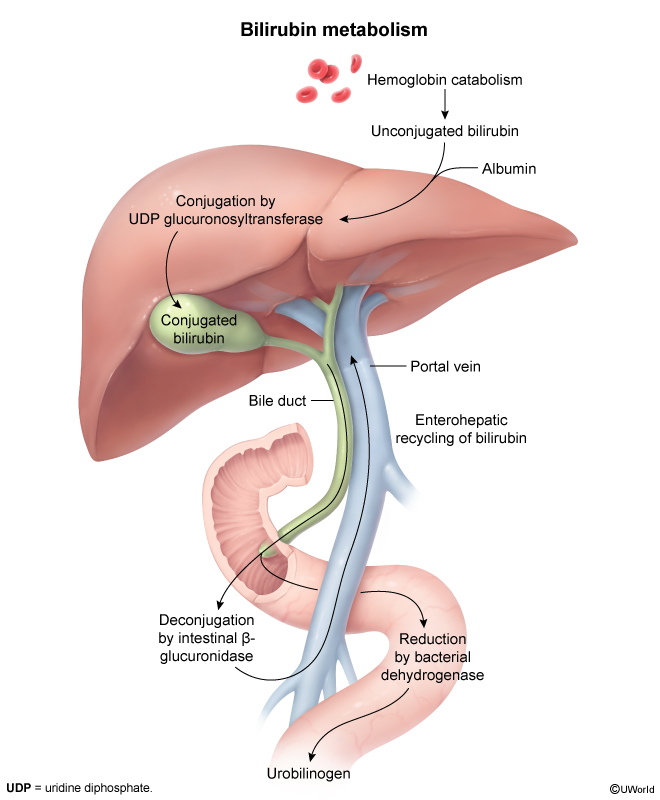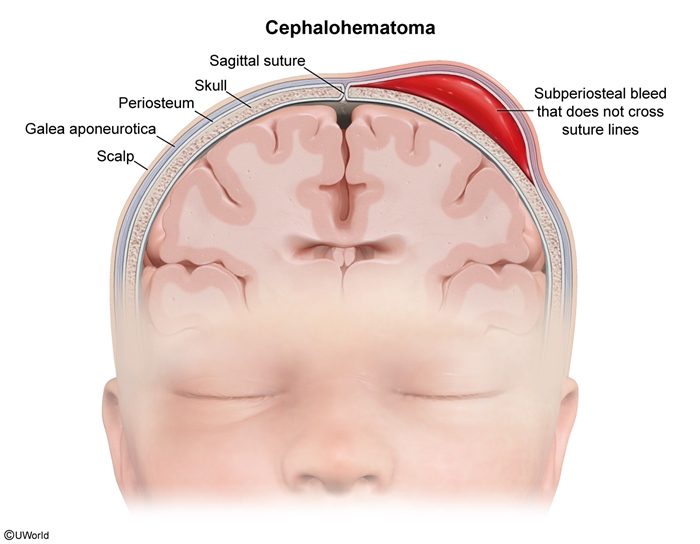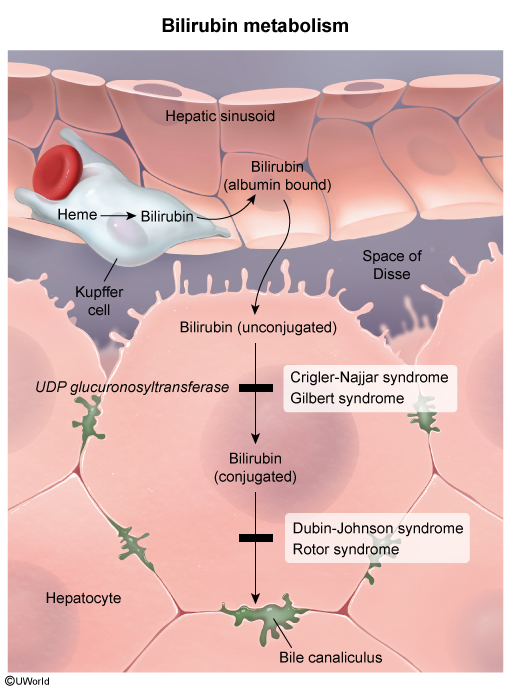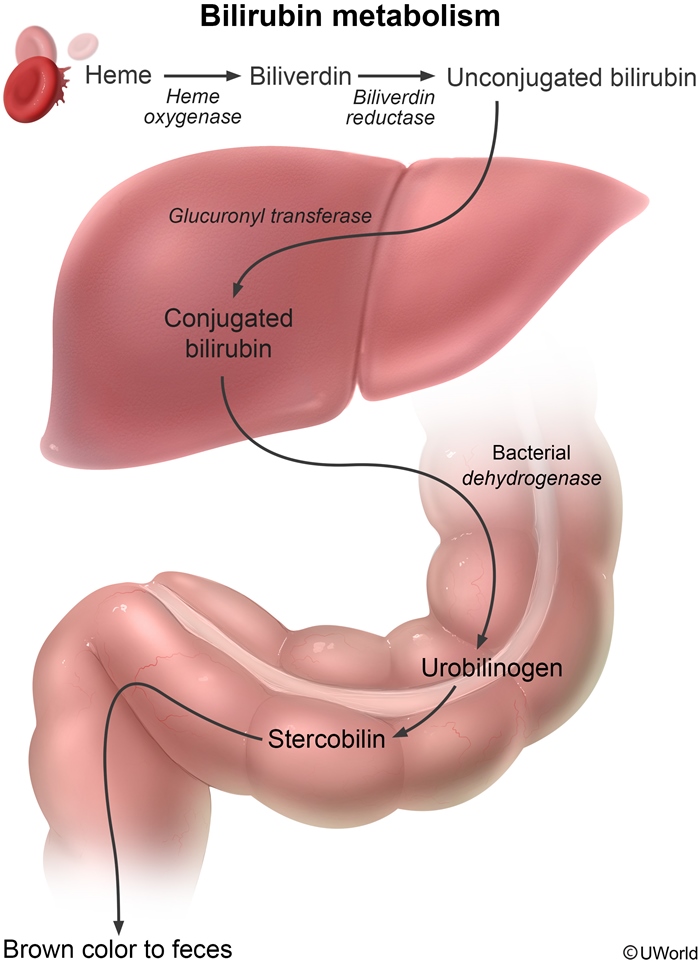Neonatal Jaundice
Article Sections
Introduction
Neonatal jaundice is a sign of elevated serum bilirubin levels and affects approximately 60% of term infants and 80% of preterm infants. Although most cases are benign, commonly due to immature bilirubin metabolism, severely elevated serum bilirubin levels can lead to neurotoxicity (ie, bilirubin-induced neurologic dysfunction [BIND]) if untreated.
Bilirubin metabolism
Bilirubin is a product of heme catabolism that functions as an antioxidant but can be toxic in excess. Therefore, bilirubin is metabolized by the liver and excreted by the kidneys and intestines, as follows:
- Bilirubin conjugation: Bilirubin is insoluble and binds albumin for transport to the liver, where it is metabolized in hepatocytes (Figure 1). Bilirubin is conjugated to glucuronic acid by the enzyme UDP glucuronyltransferase, making it water-soluble. Conjugated bilirubin is actively transported into bile, which is secreted into the small intestine.
Continue Learning with UWorld
Get the full Neonatal Jaundice article plus rich visuals, real-world cases, and in-depth insights from medical experts, all available through the UWorld Medical Library.
Figures

Figure 1

Figure 2

Figure 3

Figure 4
Tables
Table 1
Table 2